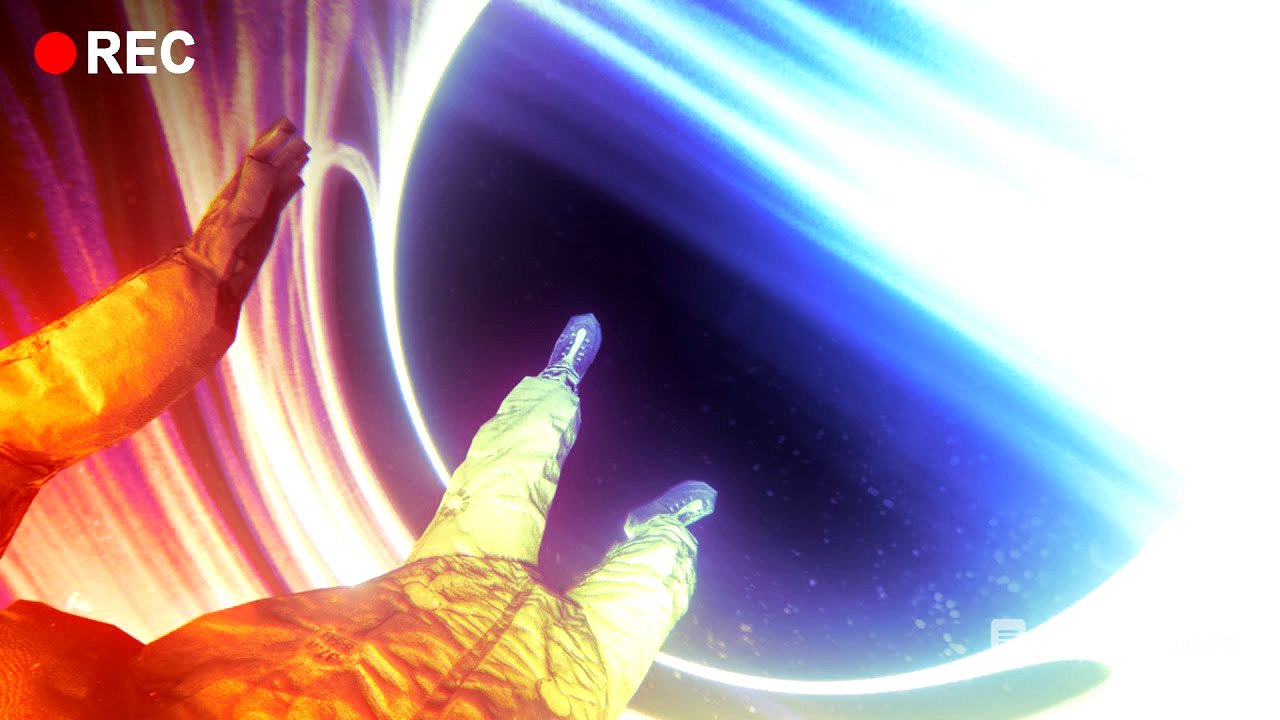TLDR;
This video explores what one might see when falling into a black hole, addressing common misconceptions and explaining the effects of gravity, light distortion, and the Doppler effect. It covers the journey from approaching the black hole, passing through the accretion disc, crossing the event horizon, and the eventual spaghettification at the singularity.
- The accretion disc around a black hole appears blue, not orange, due to the high energy emissions.
- The experience of falling into a black hole doesn't involve seeing the entire history of the universe unfold.
- Crossing the event horizon isn't immediately noticeable, but leads to inevitable spaghettification.
Introduction [0:00]
The video introduces black holes as spherical regions with intense gravity that attract objects by pulling the fabric of space. The horizon of the black hole divides the universe into exterior and interior regions, with nothing, not even light, able to escape from within the horizon. The video aims to explore what one might see when falling into a black hole, improving understanding of extreme phenomena and correcting common misconceptions.
Before the fall [1:53]
Before falling into the black hole, the immense gravity of Sagittarius A*, a supermassive black hole at the Milky Way's core, captures surrounding matter, forming a hot, fast-spinning plasma disc. This disc emits intense radiation, including light, ultraviolet, X-rays, and gamma rays, posing a threat to anyone approaching. To proceed, the video assumes the presence of an extremely resistant spacesuit with a visor to withstand the heat and filter harmful radiation, allowing detailed observation of the disc and background stars. The disc appears blue due to the higher energy emissions in that part of the visible light spectrum, similar to the bluish tint of very hot stars. One side of the disc appears brighter due to the Doppler effect, where matter approaching the observer has light waves compressed, increasing frequency, while receding matter has light waves stretched, reducing energy. The black hole's gravity deflects light rays, warping the back of the disc into a ring of light, acting as a gravitational lens. The stars in the background appear slightly blue due to time distortion caused by the black hole, making their light seem accelerated compared to the observer's clock.
Falling through the disc [5:17]
During the initial ten minutes of falling, the black hole appears to move away due to aberration, where the observer's motion towards the black hole causes light rays to reach them from a direction squashed towards the front. After this, as the fall accelerates to 4% of light speed, the black hole begins to grow in the field of view. As minutes pass and descent continues, the speed increases, intensifying the light in front and darkening the light behind, again due to the Doppler effect. The clock inside the orbiting spaceship appears to run slower due to the increasing time it takes for signals to reach the falling observer. After 57 minutes, the disc fades out as the point is reached where matter can no longer steadily orbit the black hole, spiralling into it instead.
Crossing the horizon [8:26]
Two minutes after the disc fades, the observer is twice as close to the horizon, reaching the photon sphere where light can orbit the black hole. From the spaceship, the observer's image fades and slows down, eventually freezing on the horizon as the emitted light takes longer to escape. However, for the falling observer, crossing the horizon 24 seconds after the photon sphere is unremarkable. The light of distant stars and the spaceship remain visible, and the observer can still see their own body. Locally, space-time is almost flat, so everything behaves normally. The black hole's image only occupies 15% of the field of view due to aberration, with the rest filled with stars. The spaceship behind seems to grow larger despite moving away. While crossing the horizon feels normal, sending signals to the outside becomes impossible. After another 30 seconds, just before reaching the centre, spaghettification occurs, tearing the body apart due to the intense difference in gravitational pull between head and feet. In the final moments, the impression is of falling onto a flat, black surface with an intensifying circle of light. A tenth of a second later, the remains reach the centre of the black hole.
Conclusion [12:42]
Modern physics cannot describe what happens near the centre of a black hole, where current theories suggest singularities with infinite space-time curvature. Scientists believe these singularities may not exist and require a unification of gravity and quantum physics to understand. Some hypotheses question whether one could survive crossing the horizon. Real black holes can have angular momentum, generating strange effects with multiple horizons and mathematical instabilities. Current theory provides a good idea of what one would see, correcting misconceptions such as the disc being orange (it's blue) and observing the entire history of the universe. Many mysteries remain, awaiting perfected theories to understand the heart of a real black hole.









